#nikolaus hirsch
Explore tagged Tumblr posts
Text
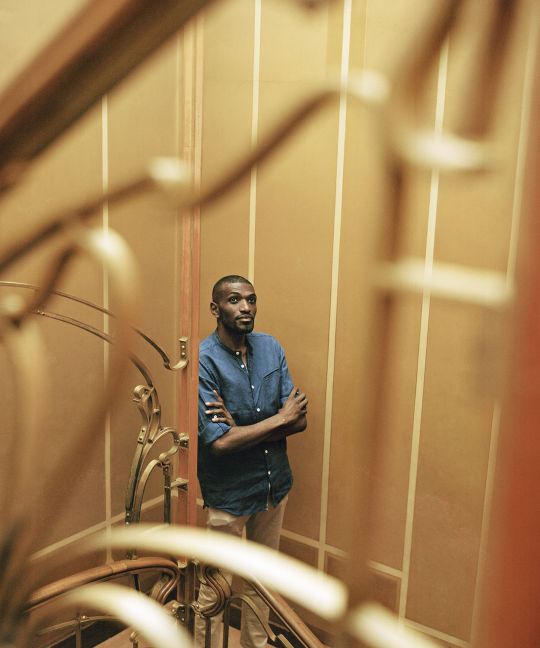
I am delighted to participate in some portraits made by Chrystel Mukeba for the exhibition STYLE CONGO, Heritage & Heresy at Civa in Brussels.
Also these images will be part of an installation at Yser station at Brussels in collaboration with Kanal Pompidou.
The works in the exhibition challenge and destabilize the canonical histories and colonial roots of this legacy. By examining the marks of colonization in the city of Brussels and in the Congolese urban landscape, they present a decolonial resignification of private and public spaces, and seek to rewrite the margins of history at the center.
FROM 17/03 to 3/09
ADDRESS CIVA
Hermitagestraat 55 1050 Brussels
Curators Sammy Baloji, Silvia Franceschini, Nikolaus Hirsch, Estelle Lecaille
With the participation of Judith Barry, Rossella Biscotti, Peggy Buth, Ayoh Kré Duchâtelet, Jean Katambayi, Johan Lagae & Paoletta Holst, Chrystel Mukeba, Daniela Ortiz, Ruth Sacks, Traumnovelle
With a selection of works by Victor Horta, Ernest Acker, Victor Bourgeois, Joseph Caluwaers, Jean-Jules Eggericx, Paul Hankar, Georges Hobé, Henry Lacoste, René Pechère, Fernand Petit, René Schoentjes, Gustave Serrurier-Bovy
#lewisossokoh#chrystelmukeba#twentyninestudio#civa#kanal pompidou#style congo#art nouveau#brussels#bruxelles#yser station#congo#sammy baloji#silvia franceschini#nikolaus hirsch#estelle lecaille#judith barry#rossella biscotti#peggy buth#ayoh kré duchâtelet#badi#drucila clement#jean katambayi#johan lagae#chrystel mukeba#daniela ortiz#ruth sacks#paoletta holst#traumnovelle#lewis ossoko h#2023
2 notes
·
View notes
Text

Psalm 42,2
Wie ein Hirsch lechzt nach Wasserbächen, so lechzt meine Seele, o Nikolaus, nach dir!
0 notes
Photo
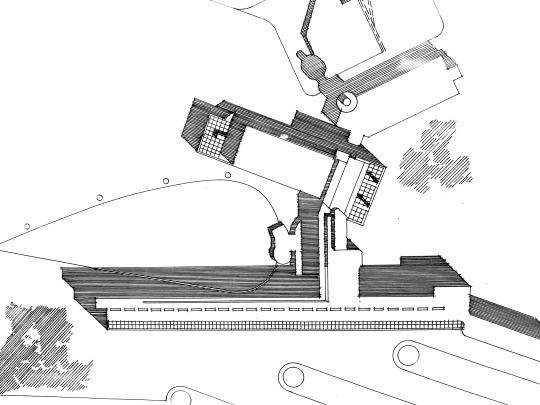
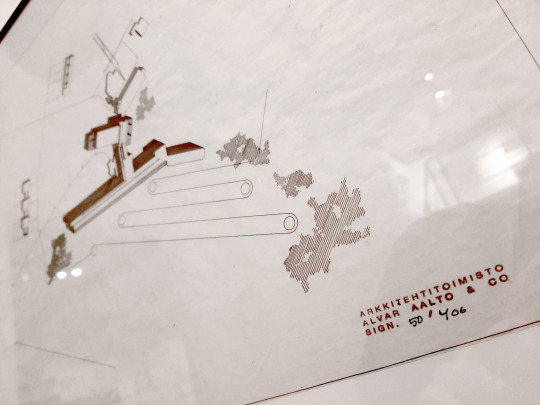

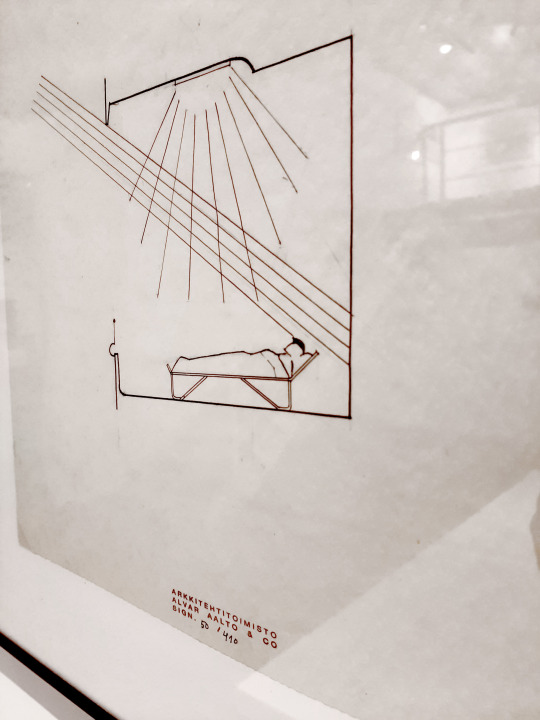
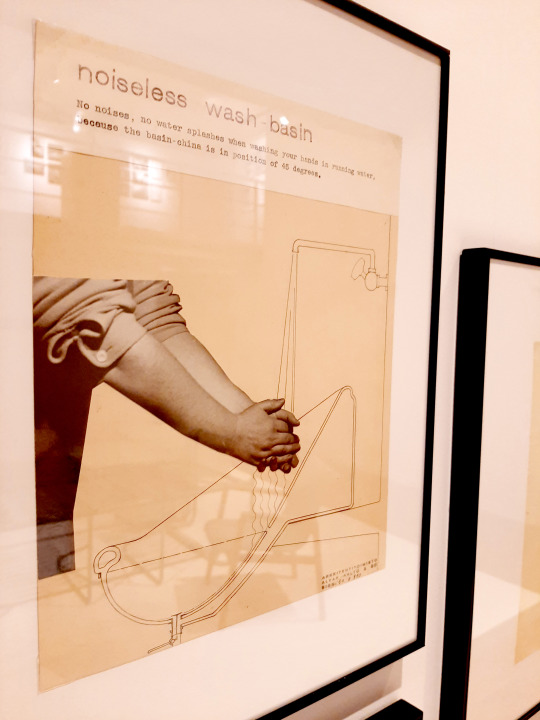
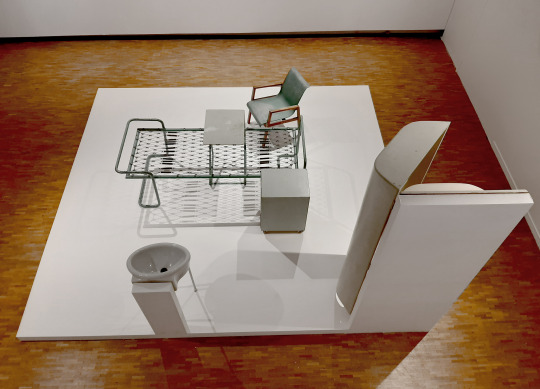
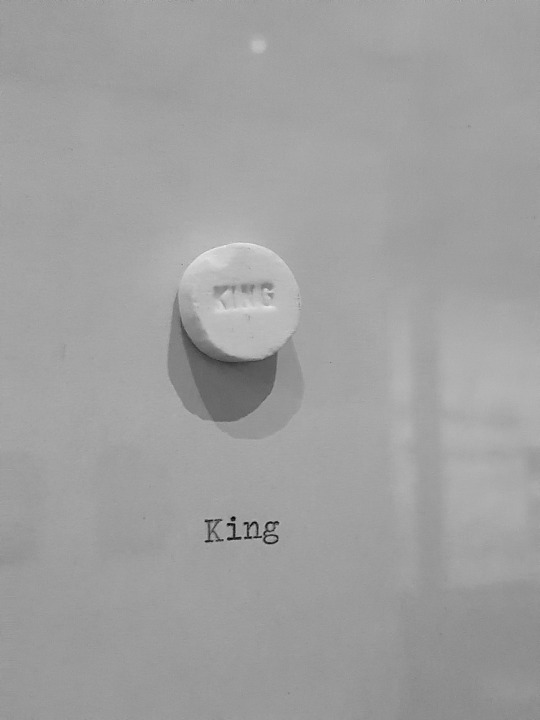
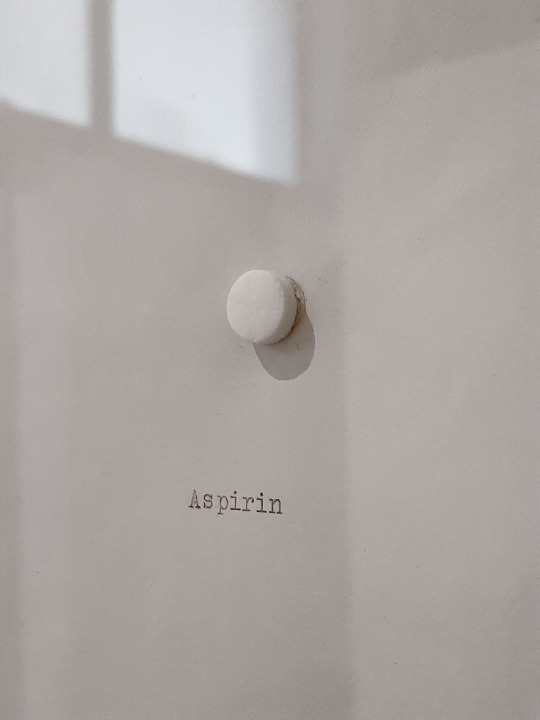

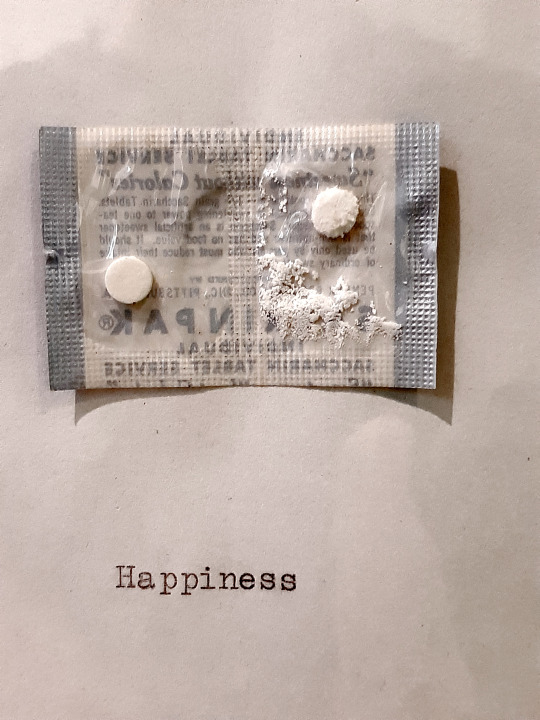
“Sick Architecture” Exhibition, CIVA, Rue de l’Ermitage 55, 1050, Brussels, Belgium _ Conceived by Beatriz Colomina [guest curator, Princeton University], Silvia Franceschini [curator CIVA], Nikolaus Hirsch [artistic director CIVA] _ Assistant curator: Minne De Meyer Engelbeen [CIVA] _ Exhibition Architecture: OFFICE Kersten Geers David Van Severen & Richard Venlet _ 06.05.2022 - 28.08.2022 _ Photos by: Spyros Kaprinis [18.06.2022].
“Architecture and sickness are tightly intertwined. Architectural discourse always weaves itself through theories of body and brain, constructing the architect as a kind of doctor and the client as patient. Architecture has been portrayed as both a form of prevention and cure for thousands of years. With Sick Architecture, CIVA and guest curator Beatriz Colomina (Princeton University) highlight a topic that has shaped our lives since the outbreak of the COVID-19 pandemic.”
https://civa.brussels/en/exhibitions-events/expo-sick-architecture
#Sick Architecture#CIVA#Brussels#Belgium#Beatriz Colomina#Nikolaus Hirsch#Minne De Meyer Engelbeen#OFFICE Kersten Geers David Van Severen#Richard Venlet#Alvar Aalto#Hans Hollein#Spyros Kaprinis#2022
26 notes
·
View notes
Text

EL CANTO DE LAS JUNCIAS
Por senda oculta del bosque gusto de hurtarme entre luces del juncal yermo a la riba ¡por pensar en ti, muchacha!
Cuando afosca la espesura, rozan sigilosas cañas, y se quejan y susurran; sin quererlo rompo en llanto.
Y me parece que escucho vibrar de tu voz el eco, y al fondo de la laguna zozobrar tu suave canto.
*
El sol declina, pasan nubes negras, ¡con bochorno tímido, huye todo viento!
Fieros por el cielo corren rayos lívidos; cruza la laguna su imagen fugaz.
Como en un relámpago me parece verte: tus largos cabellos restallan al viento.
*
En quietud de la laguna luna clara se demora tejiendo quebradas rosas en el verde de las juncias.
Corzo vaga en el otero, mirando la noche en alto; tal vez rebullen las aves que sueñan carrizo adentro.
Mi mirar se sume en llanto; ¡por lo mas hondo del alma duce pensamiento tuyo cala como una oración!
**
SCHILFLIEDER
Auf geheimem Waldespfade Schleich ich gern im Abendschein An das öde Schilfgestade Mädchen, und gedenke dein!
Wenn sich dann der Busch verdüstert, Rauscht das Rohr geheimnisvoll, Und es klaget, und es flüstert, Daß ich weinen, weinen soll.
Und ich mein, ich höre wehen Leise deiner Stimme Klang Und im Weiher untergehen Deinen lieblichen Gesang.
*
Sonnenuntergang; Schwarze Wolken ziehn, O wie schwül und bang Alle Winde fliehn!
Durch den Himmel wild Jagen Blitze, bleich; Ihr vergänglich Bild Wandelt durch den Teich.
Wie gewitterklar Mein ich dich zu sehn, Und dein langes Haar Frei im Sturme wehn!
*
Auf dem Teich, dem regungslosen, Weilt des Mondes holder Glanz, Flechtend seine bleichen Rosen In des Schilfes grünen Kranz.
Hirsche wandeln dort am Hügel, Blicken in die Nacht empor; Manchmal regt sich das Geflügel Träumerisch im tiefen Rohr.
Weinend muß mein Blick sich senken; Durch die tiefste Seele geht Mir ein süßes Deingedenken, Wie ein stilles Nachtgebet!
Nikolaus Lenau
di-versión©ochoislas
#Nikolaus Lenau#literatura alemana#poesía romántica#juncias#mal de amor#soledad#apartamiento#di-versiones©ochoislas
4 notes
·
View notes
Text
KL: A History of the Nazi Concentration Camps
KL: A History of the Nazi Concentration Camps
Wachsmann, Nikolaus. KL: A History of the Nazi Concentration Camps. New York: Farrar, Straus and Giroux, 2016. ISBN: 978-0-374-53592-6 Sometime in early 1944 children in the Brikenau family camp performed a musical based on Disney’s Snow White. This special camp was primarily Czech Jews deported from the Theresienstadt ghetto. The children’s teachers, led by inmate Fredy Hirsch, managed to…

View On WordPress
1 note
·
View note
Text
Rauenberger Weihnachtsmarkt 2022

Rauenberger Weihnachtsmarkt 2022 Vom 9. bis 11. Dezember 2022 findet der achte Rauenberger Weihnachtsmarkt auf dem Rathaus- und Kirchplatz in Rauenberg statt. An zahlreichen Hütten finden die Besucher ein breites Angebot von Geschenkartikeln bis zu weihnachtlichen Köstlichkeiten. Insgesamt beteiligen sich 23 Vereine bzw. Beschicker und verwöhnen die Besucher mit weihnachtlichen Köstlichkeiten. Zudem werden Kunsthandwerk, Geschenkartikel, Schmuck und vieles mehr feilgeboten. Ein Rahmenprogramm rundet den Weihnachtsmarkt ab. Eingepackt in warme Kleidung dürfen sich die Besucher auf eine gemütliche Atmosphäre freuen und neben Punsch und Glühwein den Vorträgen der örtlichen Vereine und Musikgruppen lauschen. Los geht’s am Freitag, 9. Dezember 2022 um 18 Uhr mit der feierlichen Eröffnung durch Herrn Bürgermeister Seithel. Der Musikverein Rauenberg spielt dazu weihnachtliche Lieder. Später darf noch den Klängen des MGV Sängerbund gelauscht werden. Die Kinder des Kindergartens Unterm Regenbogen, Seepferdchen, Kinderhaus Märzwiesen und KiGa Mittendrin sowie der Mannabergschule werden jeweils einen Weihnachtsbaum schmücken. Für Sonntag, 11.12.2022 – 16.30 Uhr hat sich der Nikolaus angekündigt. Der Gewerbeverein spendiert die kleinen Päckchen, die der Nikolaus an alle Kinder verteilen möchte. Jung und Alt sind aufs Herzlichste eingeladen, die Atmosphäre inmitten den Ortskerns zu genießen und sich an den kulinarischen Köstlichkeiten zu erfreuen. Programm Rauenberger Weihnachtsmarkt 2022 Freitag, 9.12.2022 18.00 Uhr Eröffnung durch Herrn Bürgermeister Seithel 18.15 Uhr Stammorchester des Musikvereins Rauenberg zur Eröffnung 20.30 Uhr Weihnachtslieder gesungen vom MGV Sängerbund Rauenberg Samstag, 10.12.2022 16.00 Uhr Lieder zu Advent und Weihnachten Capella Carolina und Kammerchor Camerata Carolina Sonntag, 11.12.2022 15.00 Uhr Jugendorchester des Musikvereins Rauenberg mit weihnachtlichen Liedern 16.30 Uhr Der Nikolaus kommt Öffnungszeiten des Weihnachtsmarkts Freitag: 18 – 22 Uhr Samstag: 17 – 22 Uhr Sonntag: 14 – 21 Uhr Kulinarischer Wegweiser Weihnachtsmarkt 2022 Angelverein Rauenberg Backfischbrötchen Heringsbrötchen Calamares Fanfarencorps Rauenberg – Förderverein Gulaschsuppe Erbsensuppe Heiße Wurst Rindswurst Waffeln Weihnachtliche Liköre Freiwillige Feuerwehr Rauenberg - Förderverein Brat-/Feuerwurst im Brötchen Winzerglühwein rot und weiß Bier Kinderpunsch Cola/Fanta GV Liederkranz Rauenberg Curry-/Feuer-/Bratwurst Weihnachtsplätzchen Glühwein Sekt Mineralwasser Los Amigos Rawhill Käsefondue Glühwein Apfelstrudellikör MGV Sängerbund Rauenberg Original Nürnberger Rostbratwürstchen im Weck Gegrillter Saumagen mit/ohne Zwiebeln im Weck Glühwein mit/ohne Schuss Dachsenfranz Weihnachtsbier Weihnachtstee Musikverein Rauenberg Flammkuchen Langos Glühwein Kinderpunsch Liköre Postillion e.V. Jugendarbeit Crepes Softdrinks Privatinitiative Elke Greulich Kürbissuppe Heißes Raclette-Brot Winzerglühwein Glüh-Gin SSV Rauenberg Hamburger Cheeseburger Vegetarische Burger Plätzchen Linzertorte Heißer Lumumba Tennisclub Rauenberg – Förderverein Gulaschsuppe Kartoffelsuppe Glühwein VfB Rauenberg Currywurst Feuerwurst Bratwurst Frikadelle mit/ohne Zwiebeln Glühwein Kinderpunsch Baileys Eierlikör Alkoholfreie Getränke Weingut Hirsch Wildschweingulasch Winzerglühwein Punsch Weine Edelbrände Liköre Weinbau und Brennerei Rühl Hausgemachte Maultaschen Hausgemachter Winzer-Glühwein Glüh-Gin Liköre Brände Lesen Sie den ganzen Artikel
0 notes
Photo

What is luxury? Anything that is not essential to life and that, once everyone has it, is rather annoying. —Solution 264, “Public Poverty” Having furnished solutions for Germany and Dubai, Ingo Niermann takes a new look at what nationhood can mean and accomplish today, finding inspiration, of all places, in North Korea. Now that the promise of global prosperity and abundance can technically be fulfilled, the time has come for a minimalist rethink of society. By relying on drills and a principle of reduction, the individual can be granted a freedom for experiences and ideas that are not possible otherwise. The more we simplify, the lighter the ballast we'll have to carry. The twelfth volume in the Solution series includes an account of Niermann's travels through North and South Korea, accompanied by the author's photographs. The eleven solutions in Solution 264–274: Drill Nation build from insights culled while on the trip. Published to coincide with the Real DMZ Project 2015, curated by Sunjung Kim and Nikolaus Hirsch #HemanChong #ReneeStaal #TheLibraryOfUnreadBooks #DrillNation #IngoNiermann #RealDMZproject2015 #RealDmz #NorthKorea #SouthKorea #Bookstagram #booksofinstagram #bookstagrammer #booklover #bookaddict #booknerd #bookphotography #booklove #bookcommunity #library #librarylife #librarybook #sternbergpress #libraryofinstagram (at The Library of Unread Books) https://www.instagram.com/p/Ck5Ov7qLJx_/?igshid=NGJjMDIxMWI=
#hemanchong#reneestaal#thelibraryofunreadbooks#drillnation#ingoniermann#realdmzproject2015#realdmz#northkorea#southkorea#bookstagram#booksofinstagram#bookstagrammer#booklover#bookaddict#booknerd#bookphotography#booklove#bookcommunity#library#librarylife#librarybook#sternbergpress#libraryofinstagram
0 notes
Text
Accumulation: The Art, Architecture, and Media of Climate Change
Accumulation: The Art, Architecture, and Media of Climate Change
Accumulation: The Art, Architecture, and Media of Climate Change Nick Axel (editor), Nikolaus Hirsch (editor), Daniel Barber (editor), Anton Vidokle (editor) Examines how images of accumulation help open up the climate to political mobilization The current epoch is one of accumulation: not only of capital but also of raw, often unruly material, from plastic in the ocean and carbon in the…

View On WordPress
0 notes
Text
Sick (rather than smart)
Sick Architecture Talks e-flux Architecture
May 6, 2022, 2pm
CIVA Rue de l’Ermitage 55 Kluisstraat 1050 Brussels Belgium
Add to Calendar
www.e-flux.com
Sick Architecture Talks is a conference program accompanying the opening of Sick Architecture, an exhibition curated by Beatriz Colomina, Silvia Franceschini, and Nikolaus Hirsch at CIVA. Moderated by e-flux Architecture Deputy Editor Nick Axel, Sick Architecture Talks will feature presentations by more than 20 architects, artists, writers, and scientists.
Architecture and sickness are tightly intertwined. Architectural discourse always weaves itself through theories of body and brain, constructing the architect as a kind of doctor and the client as patient. Architecture has been portrayed as both a form of prevention and cure for thousands of years. Health is supposed to be the main goal of the architect, as Vitruvius already insisted in the first century BC. Yet architecture is also often the cause of illness, from toxic building materials to sick building syndrome. Architecture itself has become sick.
Every age has its signature afflictions, and each affliction has its architecture. The age of bacterial diseases, particularly tuberculosis, gave birth to modern architecture in the early decades of the 20th century, to white buildings detached from the “humid ground where disease breeds,” as Le Corbusier put it. In the postwar years, attention shifted to psychological problems. The architect was often seen as a kind of shrink; the house not just a medical device for the prevention of disease, but for providing psychological comfort, or as Richard Neutra put it, “nervous health.” The 21st century is the age of neurological disorders, with depression, ADHD, borderline personality disorders, burnout syndrome, allergies, and “environmental hypersensitivity” defining the contemporary experience of architecture and the built environment.
Meanwhile, pandemics have returned. COVID-19 is completely reshaping architecture and urbanism. The virus has exposed the structural inequities of race, class, and gender, provoking a call for social transformation and perhaps an architectural revolution. The exhibition, together with the online publication series Sick Architecture, offers a wider historical and conceptual frame for such conversations.
Sick Architecture talks May 6, 2–8pm CEST
2pm CEST, Introduction Nikolaus Hirsch Beatriz Colomina
2:20pm CEST, Borders panel Simon De Nys and Johan Lagae, “Cordon Sanitaire” Guillermo S. Arsuaga, “Ellis Island: Architecture at the service of biopower” Jeremy Lee Wolin, “Exclusion by Design: the Angel Island Immigration Station” Maxwell Smith-Holmes, “Toxic Workplaces, Contaminated Homes, and Irradiated Landscapes”
3:20pm CEST, Contagion panel Angela Brown, “Immunocompromised Architecture: Henry Klumb and the Puerto Rican Home” Dante Furioso, “Sanitary Imperialism” Andrea Bagnato, “Terra Infecta” An Tairan, “Touching, Disease, and the Sacred Artifact”
4:10pm CEST, Coping panel Iason Stathatos, “Hunger Architecture” Caroline Voet, “Nearness in a House for (Im)mobile Guests” Victoria Bergbauer, “Prosthetic Village” 51N4E, “Tous Ensemble”
5:05pm CEST, Break
5:35pm CEST, Keynote Mark Wigley, “Chronic Whiteness”
5:55pm CEST, Toxicity panel Clemens Finkelstein, “sick world building syndrome” Victoria Bugge Øye, “Coop Himmelblau and the Making of Environmental Health” Kara Plaxa, “An Epidemic of Toxic Masculinity” Holly Bushman, “Regel-ated Bodies”
6:50pm CEST, Psychiatry panel Marie de Testa, “Hysteria as Scenography” Alexandra Sastrawati, “Depressed Worlds” Giuseppina Scavuzzo, “Franco Basaglia and the Destruction of the Mental Hospital” architecten jan de vylder inge vinck and Gideon Boie, “The Caritas Psychiatry”
7:50pm CEST, Keynote Emily Apter, “Covid-Denialism”
1 note
·
View note
Photo

https://www.sternberg-press.com/series/critical-spatial-practice-series/
http://criticalspatialpractice.org/
A critical spatial practice is a means of rethinking one’s modes of action and codes of conduct. Edited by architects Nikolaus Hirsch and Markus Miessen, this series reinvents its internal structure according to the content of each volume: a toolbox that ranges from single-authored essays to conversations, manifestos, fiction, investigative journalism, historical studies, and artistic interventions, each accompanied by an artist contribution. The series follows the tradition of the discipline of architecture using the publication format as a testing ground for ideas.
0 notes
Text
Norman Foster Foundation Madrid
Norman Foster Foundation in Madrid, On Archives Masterclass, Digital X Workshop News, Spain
Norman Foster Foundation Madrid
Public debates in which practitioners from the fields of design and innovation, Spain
29 July 2021
Norman Foster Foundation ‘On Archives’ Masterclass Series
Madrid, 29th of July 2021 – The Norman Foster Foundation (NFF) presents the ‘On Archives’ Masterclass Series, a series which explores the fundamental aspects related to architectural archives and libraries around the world. Given by fourteen leading experts in the fields of archiving, architecture, art, design and heritage management, this video series supports the NFF’s extensive educational programme by promoting an exchange of knowledge across a range of geographic and disciplinary perspectives.
youtube
While archives have, for centuries, been the core of cultural, historic and artistic institutions, these online lessons also acknowledge the relevance of archives for the performance of other disciplines, such as architecture and design, and for the future of society. From the Canadian Centre of Architecture (CCA) to the Vatican Museums, speakers will touch on key themes such as the materiality of archives, the concept of interarchive, the challenges of digitising archive materials, new preservation methods based on a dynamic order and how to manage special collections, among other topics.
While archives have, for centuries, been the core of cultural, historic and artistic institutions, these online lessons also acknowledge the relevance of archives for the performance of other disciplines, such as architecture and design, and for the future of society. From the Canadian Centre of Architecture (CCA) to the Vatican Museums, speakers will touch on key themes such as the materiality of archives, the concept of interarchive, the challenges of digitising archive materials, new preservation methods based on a dynamic order and how to manage special collections, among other topics.
In addition to an introductory masterclass given by Norman Foster (President, Norman Foster Foundation, Madrid, Spain / London, UK / New York, USA), in which he considers the important role that archives play in anticipating the future, contributing speakers include the following experts:
Giovanna Borasi, Director, Canadian Centre for Architecture (CCA), Montreal, Quebec, Canada; Sol Camacho, Director, Instituto Lina Bo e P.M. Bardi – Casa de Vidro, São Paulo, Brazil; Estrella de Diego, Academician, Real Academia de Bellas Artes de San Fernando, Madrid, Spain; Michelle Elligott, Chief of Archives, Library and Research Collections, MoMA, New York, NY, United States of America; Patricia Hartmann, Director, Sitterwerk Foundation, St. Gallen, Switzerland; Charles Hind, Chief Curator & HJ. Heinz Head of Drawings, British Architectural Library, RIBA, London, United Kingdom; Barbara Jatta, Director, Vatican Museums, Vatican City, Italy; Valerie Maasburg, Director, Bookshop and Artist’s Books Collection, Ivorypress, Madrid, Spain; Hans Ulrich Obrist, Artistic Director, Serpentine Galleries, London, United Kingdom; Mar Perez Morillo, Head of Division of Digital Processes and Services, Biblioteca Nacional de España, Madrid, Spain; Marcia Reed, Chief Curator, Associate Director and Head of Special Collections and Exhibitions, Getty Research Institute, Los Angeles, CA, United States of America; Mathias Schwartz-Clauss, Director, Domaine de Boisbuchet, Lessac, France; Bill Sherman, Director, The Warburg Institute, London, United Kingdom.
As part of the NFF’s upcoming digital initiatives, the ‘On Archives’ Masterclass Series will be soon followed by the release of the ‘Future Cities’ Conversation Series, a virtual dialogue series in which Norman Foster will reflect on the future of cities alongside ten leading voices and visionaries, as well as the release of the ‘On Archives’ Conversation Series, another virtual dialogue conducted by academician Estrella de Diego and art curator Hans Ulrich Obrist on the most compelling issues related to archives and libraries.
The masterclasses included in this series are part of the Norman Foster Foundation’s Education + Research Programme and have been developed thanks to the research fellowships supported by BYD, Crankstart Foundation, David and Nina Fialkow, Ford Foundation, Lisa and Richard Cashin and the Rolex Institute.
The ‘On Archives’ Masterclass Series is currently available for viewing on Youtube.
24 Jan 2019
Norman Foster Foundation Digital X Workshop 2019
The natural world and the artificial world are becoming interchangeable. Change will happen very rapidly
18 – 22 February 2019
• The Norman Foster Foundation presents the second edition of its annual Digital X Workshop with public debates in which practitioners from the fields of design and innovation will participate, including Amber Case, W. Daniel Hillis, Mary Lou Jepsen, David Moinina Sengeh, Nicholas Negroponte and Ben Vickers.
• The 2019 Digital X Workshop is designed to pose key questions and come up with some considered conclusions in a week-long event hosted in the Madrid headquarters of the Norman Foster Foundation.
• A distinguished group of specialists will engage with ten selected students from ten universities around the world who share a common interest in the subject. The workshop mentor is Nicholas Negroponte, co-founder and former director of MIT Media Lab.
Image from the first edition of the Norman Foster Foundation Digital X Workshop (2018) photo © Norman Foster Foundation
Madrid, 23 January 2019
The second edition of the Norman Foster Foundation Digital X Workshop will take place on 18-22 February 2019, in association with e-flux Architecture. ‘All things digital are simultaneously local and global, large and small, inside and outside of any given boundary’ states workshop mentor Nicholas Negroponte. ‘The digital world brings together previously separate worlds, like those of discovery, invention and expression. It does that because it has become the DNA of each. The natural world and the artificial world are becoming interchangeable. Change will happen very rapidly. Fasten your seatbelts.’
With that concept as a background, the workshop is designed to pose an key questions and come up with some considered conclusions . Can you build a city without infrastructure: no roads, no sewers, no water or power? Why bother? The answer is to renovate slums without bulldozing them, which is something that could impact two or three billion people. Call it a new autonomy, that of a house or a small community, taking some pages from outer space and bringing them back to earth.
The Academic Body spans a wide range of practitioners from the fields of design and innovation, including Amber Case, Co-founder of CyborgCamp, Cambridge, MA, United States; W. Daniel Hillis, Co-founder of Thinking Machines Corporation and of Applied Invention, Cambridge, MA, United States; Mary Lou Jepsen, Founder of Openwater, San Francisco, CA, United States; Hasier Larrea, Founder and CEO of Ori Inc., Cambridge, MA, United States; David Moinina Sengeh, Chief Innovation Officer at the Government of Sierra Leone, Freetown, Sierra Leone and Ben Vickers, Chief Technology Officer at the Serpentine Gallery, London, United Kingdom
After reviewing applications submitted by hundreds of candidates from around the world, the selection committee awarded ten scholarships to students from the following universities and institutions: American University of Beirut, Beirut, Lebanon; American University in Dubai, Dubai, United Arab Emirates; Ashesi University, Berekuso, Ghana; Cambridge University, Cambridge, United Kingdom; Cape Town University, Cape Town, South Africa; Delft University of Technology, the Netherlands; George Washington University, Washington, DC, United States; Illinois Institute of Technology, Chicago, IL, United States; Polytechnic University of Madrid, Madrid, Spain and the University of Hong Kong, Hong Kong, China.
These ten students will be asked to park reality at the door. Inviting them to bring their most advanced thinking, craziest ideas, whether they relate to architecture or not, to apply them, their derivatives or simply their point of view to the needs of the world’s poorest people, especially the increasing number who live in slums.
The Digital X Workshop will include seminars, lectures, one-to-one tutoring and architectural tours to learn more about the context of Madrid culminating in a five day workshop led by the Atelier mentor, Nicholas Negroponte, co-founder and former director of MIT Media Lab.
e-flux Architecture will join this year’s edition of the Digital X workshop as its editorial partner. Editors Nikolaus Hirsch and Nick Axel will conduct a series of interviews during the duration of the workshop, the result of this joint initiative will be unveiled in Spring 2019.
Public Debates
Tuesday 19 February 2019, 12:30 p.m. – 2:20 p.m. Fundación Francisco Giner de los Ríos Paseo del General Martínez Campos 14, 28010, Madrid, Spain With the participation of Amber Case, W. Daniel Hillis, Mary Lou Jepsen, David Moinina Sengeh, Nicholas Negroponte and Ben Vickers.
Tim Stonor, Managing Director of Space Syntax, London, United Kingdom, and part of the Advisory Board of the Norman Foster Foundation, will chair the debates.
e-flux Architecture
e-flux Architecture is a sister publishing platform of e-flux, archive, and editorial project founded in 2016. The news, events, exhibitions, programs, journals, books, and architecture projects produced and/or disseminated by e-flux Architecture describe strains of critical discourse surrounding contemporary architecture, culture, and theory internationally.
Since its inception, e-flux Architecture has maintained a dynamic international program of projects and events in collaboration with leading institutions and practitioners. Editorial content commissioned and published by e-flux Architecture consistently showcases rigorous, critical, sincere and engaged theoretical work being produced today in and around the fields of architecture, urbanism, and design. For more information, visit https://ift.tt/377zaPr
7 Sep 2018
Norman Foster Foundation Urban Mobility Workshop
Could the new technologies change the reality and perception of new ways of transportation?
Dates: 17-21 Sep 2018
Location: Monte Esquinza 48, Madrid, Spain
The Norman Foster Foundation presents its Urban Mobility Workshop with a public debate with the participation of Alfredo Brillembourg, Tilly Chang, Norman Foster, Carlo Ratti and Tim Stonor. The 2018 Urban Mobility public debate will explore how new technologies could open up an exciting range of opportunities in the infrastructure of movement.
Norman Foster Foundation Urban Mobility Workshop
26 May 2018
Norman Foster Foundation Madrid News
Norman Foster Foundation presents its annual ‘On Cities’ Workshop with the support of Bloomberg Philanthropies
NORMAN FOSTER FOUNDATION WORKSHOP 18-22/06/2018 – ON CITIES
• The 2018 On Cities Workshop will explore the premise that emerging urban innovations can create more livable, entrepreneurial communities and dramatically reduce resources consumed by cities, in a week-long event hosted in the Madrid headquarters of the Norman Foster Foundation.
• A distinguished group of specialists will engage with ten selected students from ten universities around the world sharing a common interest in the subject. This year’s workshop mentor is Kent Larson, Director of MIT Media Lab City Science Group and Initiative.
Madrid, 25 May 2018
The Norman Foster Foundation On Cities Workshop will take place on 18-22 June 2018, supported by Bloomberg Philanthropies, closing the 2017-2018 Educational programme initiative. The workshop will focus on Autonomous Innovative Communities, selecting a district in Madrid as a case-study for a research project that will be developed throughout the week.
Can each community locally produce all of the energy, food, and clean water needed for basic living— requiring no centralised infrastructure? Can humans transition from ownership to sharing, while living and working in compact, agile, supportive environments? This workshop explores the premise that emerging urban innovations can dramatically reduce resources consumed by cities while simultaneously creating more livable, entrepreneurial communities.
‘We are living in an era of extreme urbanisation and rapid global warming’, states workshop mentor Kent Larson. ‘The challenges of both call for more than mere incremental adjustments.’
After reviewing applications submitted by hundreds of candidates from around the world, the selection committee awarded ten scholarships to students from the following universities and institutions: American University of Dubai, Dubai, United Arab Emirates; Harvard Graduate School of Design, Cambridge, United States; London School of Economics and Political Science, London, United Kingdom; Pontificia Universidad Católica de Chile, Santiago de Chile, Chile; Royal Danish Academy of Fine Arts, Copenhagen, Denmark; Technische Universiteit Delft, Delft, the Netherlands; Tongji University, Shanghai, China; Tsinghua University, Beijing, China; Universidad Politécnica de Cataluña, Barcelona, Spain and University of the Witwatersrand, Johannesburg, South Africa.
These ten students will engage with a group of specialists through a series of seminars and lectures culminating inafive day workshop led by the mentor Kent Larson, Director of MIT Media Lab City Science Group and Initiative, and his team.
The Academic Body spans a wide range of practitioners working in different fields interrelated with the City, including: Beatriz Colomina, Director of Graduate Studies, School of Architecture, Princeton University, Princeton, United States; Luis Cueto, General Coordinator for the Mayor in Madrid, Madrid City Hall, Madrid, Spain; Anupama Kundoo, Principal, Anupama Kundoo Architects, Madrid, Spain/Auroville, India; Winy Maas, Co-Founder and Director of MVRDV and Director of the Why Factory, Delft, the Netherlands; Tim Stonor, Managing Director of Space Syntax, London, United Kingdom; Leonor Tarrasón, Director of Environmental Solutions, Norwegian Institute for Air Research, Oslo, Norway; Belinda Tato and José Luis Vallejo, Founders and Directors of Ecosistema Urbano, Madrid, Spain/Miami, United States.
The On Cities Workshop will include seminars, lectures, one-to-one tutoring and urban architectural tours to learn more about the context of Madrid and it’s districts. During the course of the workshops, participants will have the opportunity to engage with the Norman Foster Foundation’s archive and research projects.
Nicholas Negroponte, Co-Founder and former Director of MIT Media Lab, Cambridge, United States will act as the Chief Advisor of the workshop tutoring the students through the research process.
As a way to disseminate knowledge and ideas, the public lectures will be recorded and documented for publication in series of annual books published by the Norman Foster Foundation
Public Debates
19th June 2018 6 p.m.- 8 p.m. Fundación Francisco Giner de los Ríos Paseo del General Martínez Campos 14, 28010, Madrid, Spain
6:00 p.m. – On Cities: Governance • Introduction by Kent Larson • Keynotes by Beatriz Colomina, José Luis Vallejo, Leonor Tarrasón and Luis Cueto • Debate between Beatriz Colomina, José Luis Vallejo, Leonor Tarrasón and Luis Cueto, moderated by Kent Larson
7:00 p.m. – On Cities: Transformations • Introduction by Workshop mentor Kent Larson • Keynotes by Winy Maas, Belinda Tato, Anupama Kundoo and Tim Stonor • Debate by Winy Maas, Belinda Tato, Anupama Kundoo and Tim Stonor, moderated by Kent Larson
8:00 p.m. – Wrap up • Dialogue between Norman Foster and Kent Larson
Bloomberg Philanthropies
Bloomberg Philanthropies works in over 120 countries around the world to ensure better, longer lives for the greatest number of people. The organisation focuses on five key areas for creating lasting change: Arts, Education, Environment, Government Innovation, and Public Health. Bloomberg Philanthropies encompasses all of Michael R. Bloomberg’s charitable activities, including his foundation, corporate and personal giving. In 2017, Bloomberg Philanthropies distributed $702 million.
For more information, please visit www.bloomberg.org or follow us on Facebook, Instagram, Snapchat, and Twitter.
8 Jan 2018 The Norman Foster Foundation presents its annual Digital X Workshop with the support of Future Planet Capital
NORMAN FOSTER FOUNDATION WORKSHOP
15-19 Jan 2018
DIGITAL X
• Norman Foster Foundation presents its first Digital X Workshop with the support of Future Planet Capital.
• The 2018 Digital X Workshop will explore the kinship of Architecture and the Digital World in a week-long event hosted in the Madrid headquarters of the Norman Foster Foundation.
• A distinguished group of specialists will engage with ten selected students from ten universities around the world sharing a common interest in the subject. This year’s Atelier mentor is Nicholas Negroponte, cofounder and former director of MIT Media Lab.
The first Norman Foster Foundation Digital X Workshop will take place on 15-19 January 2018, supported by Future Planet Capital.
‘All things digital are simultaneously local and global, large and small, inside and outside of a given boundary’, states Atelier mentor Nicholas Negroponte. ‘The digital world is not crisp; it is porous and diffuse. It brings together previously separate worlds, like those of discovery, invention and expression. It does that because it has become the DNA of each. Architecture does that too.’
What happens when the natural world and the artificial world become one and the same? How does society change when direct brain communication occurs among humans, and between humans and machines? The workshop will focus on this kinship, that of architecture and the digital world, how the two play together now, and how they will change the world together, going forward, discussing things that, outrageous today, will be commonplace tomorrow.
After reviewing applications submitted by hundreds of candidates from around the world, the selection committee awarded ten scholarships to students from the following universities and institutions: Architecture and Geomatics, University of Cape Town, South Africa; Architecture and Urbanismo Faculty (USP), Sao Paolo, Brazil; Bartlett School of Architecture, London, UK; Centre for Urban Science and Engineering IIT, Bombay, India; City Futures Research Centre, University New South Wales, Australia; National University of Singapore (NUS), Singapore; Stanford Department of Civil and Environmental, California, US; Technion Institute of Technology, Tel Aviv, Israel; Technische Universiteit Delft (TU), The Netherlands and Universidad Politécnica de Madrid, Madrid, Spain.
These ten students will develop an essay ontheme of Digital X tutored by a group of specialists through a series of seminars and lectures culminating in a five day workshop led by the Atelier mentor, Nicholas Negroponte, co-founder and former director of MIT Media Lab.
The Academic Body includes: Ricky Burdett, Director of LSE Cities and Urban Age Programme; Hugh Herr, Co-Director of the MIT Center for Extreme Bionics; Kent Larson, Director of MIT City Science Iniacitive; Amanda Levete, Founder and Principal of AL_A; Greg Lynn, Professor at UCLA School of Arts and Architecture; Farshid Moussavi, Principal of Farshid Moussavi Architecture and Benedetta Tagliabue, Principal of Miralles Tagliabue EMB Architects.
The Digital X Workshop will include seminars, lectures, one-to-one tutoring and architectural tours to learn more about the context of Madrid. Architectural critic and writer Jonathan Glancey will act as the Editor-inChief of the workshop tutoring the students to think ahead and to elaborate an essay with their personal view on the subject
As a way to disseminate knowledge and ideas, the public lectures will be recorded and documented for publication in series of annual books published by the Norman Foster Foundation. During the course of the workshops, participants will have the opportunity to engage with the Norman Foster Foundation’s archive and research projects.
Public Debates
16th January 2018 at Colegio Oficial de Arquitectos Madrid – COAM (Hortaleza, 63, 28004 Madrid, Spain)
• 6:00 p.m. – 6:30 p.m.: Keynote by Nicholas Negroponte • 6:30 p.m. – 7:00 p.m.: Dialogue between Hugh Herr and Kent Larson, moderated by Ricky Burdett. • 7:00 p.m. – 7:30 p.m.: Dialogue between Greg Lynn and Benedetta Tagliabue, moderated by Luis Fernández-Galiano. • 7:30 p.m. – 8:00 p.m.: Dialogue between Norman Foster and Amanda Levete, moderated by Jonathan Glancey
31 Oct 2017 Norman Foster Foundation Robotics Atelier 2017
NORMAN FOSTER FOUNDATION ATELIER 2017 – ROBOTICS
• Norman Foster Foundation presents its first annual Robotics Atelier with the support of the Rolex Institute
• This year’s Robotics Atelier, related to design and building, will be explored in a week-long event hosted in the Madrid Headquarters of the Norman Foster Foundation.
• A distinguished group of specialists will engage with ten selected students from ten universities around the world who share a common interest in the subject. This year’s Atelier mentor is Professor Mathias Kohler from the Swiss Federal Institute of Technology (ETH) in Zurich.
Norman Foster Foundation, Madrid, Spain, 2017: photo © Luis Asín © Norman Foster Foundation
The first Norman Foster Foundation Robotics Atelier will take place on 20-24 November 2017, supported by the Rolex Institute.
Society is on the edge of being transformed through robotics and artificial intelligence. These technological innovations have the potential to change every aspect of our lives in far-reaching ways. Last June, in the Norman Foster Foundation’s inaugural forum ‘Future is Now’, a glimpse was given into how the world of construction would be revolutionised by these developments in what could prove to be a second digital era.
Ten scholarships have been given to students selected by the following universities and institutions: The Bartlett School of Architecture, University College London, UK; Institute for Computational Design and Construction (ICD), Stuttgart, Germany; Universidad Politécnica de Madrid (UPM), Madrid, Spain; National University of Singapore (NUS), Singapore; Indian Institute of Technology (IIT), Mumbai, India; Massachusetts Institute of Technology (MIT), MA, USA; Universidad Iberoamericana de Ciencias y Tecnología, Santiago, Chile; Ashesi University, Accra, Ghana; Swiss Federal Institute of Technology (ETH), Zurich, Switzerland; Institute for Advanced Architecture of Catalonia (IAAC), Barcelona, Spain.
The selected students will engage with a group of specialists through a series of seminars and lectures culminating in a five days workshop led by the Atelier mentor, Professor Mathias Kohler and his team. Leading robotics manufacturer Universal Robots will loan three units of their highly flexible robot arm, the UR5 Robot, to the Atelier.
Contributors to the workshop include Luis Miguel Ciprés, CEO of Barrabés Next, Pablo Jarauta, Coordinator of the European Institute of Design (IED) Scientific Committee, Amelie Klein, Curator at Vitra Museum, and Gijs Van der Velden, Co-CEO of MX3D.
The Robotics Atelier will include workshops, seminars, lectures, one-to-one tutoring, and development of projects by the students. As a way to disseminate knowledge and ideas, the public lectures will be recorded and live-streamed through the Norman Foster Foundation’s website: https://ift.tt/33XGpYI. The lectures will be documented for publication in an annual series published by the Norman Foster Foundation.
During the course of the workshops, participants will have the opportunity to engage with the Norman Foster Foundation’s archive and research projects.
Public lectures
22nd November at Auditorium Fundación Telefónica – Fuencarral 3 28004 Madrid, Spain
• 18:00 h Lecture “The Robotic Touch” by Matthias Kohler, Gramazio Kohler Research, ETH Zurich, Switzerland
• 19:00 h Matthias Kohler in conversation with Amelie Klein, Curator, Vitra Design Museum, Weil am Rhein, Germany
NORMAN FOSTER FOUNDATION
The Norman Foster Foundation promotes interdisciplinary thinking and research to help new generations of architects, designers and urbanists to anticipate the future. We believe in the importance of connecting architecture, design, technology and the arts to better serve society and in the value of a holistic education that encourages experimentation through research and projects. The Norman Foster Foundation holds the Norman Foster Archive and Library, which provide a window into the larger narrative and history of our built environment through the work of Norman Foster.
The Norman Foster Foundation is based in Madrid and operates globally.
ROLEX INSTITUTE – Encouraging individual excellence through philanthropy and education
Driven by an unwavering pioneering spirit, Rolex SA is renowned for its many technical innovations in watchmaking that have made it a symbol of excellence around the globe. The company brand values of quality, know-how and individual achievement pervade all of its endeavours. Rolex is closely linked to many of the world’s highest achievers and, since its beginnings, has supported visionary men and women in a variety of fields.
The Rolex Institute embodies this philosophy. Comprising the company’s philanthropic programmes and educational initiatives, it aims at recognizing excellence and making a significant contribution to society.
23 Sep 2017
Norman Foster Foundation
Norman Foster Foundation in Madrid
“I believe that cities can change the world for good. They are doing so. Cities are the future now.” — Norman Foster
On June 1st 2017, the Norman Foster Foundation officially launched in Madrid with the forum, ‘Future is Now’. Scholars, students, thinkers, and practitioners from the fields of architecture, design, and technological innovation were invited to discuss the most pressing concerns regarding the built environment.
The forum successfully challenged preconceived ideas about the future of our cities through diverse points of view.
vimeo
Forum – Future is Now | Norman Foster Foundation from Norman Foster Foundation on Vimeo.
More than 2,100 people attended the event, 1,057 of whom were students from 32 international universities.
To watch the complete forum go to Forum – Future is Now.
Address: Norman Foster Foundation, Monte Esquinza 48, 28020 Madrid, Spain
Architecture in Madrid
Madrid Architecture Design – chronological list
Madrid Architecture News
Madrid Architectural Tours by e-architect
Norman Foster – Key Projects
Featured Foster + Partners designs, alphabetical:
Chek Lap Kok, Hong Kong Norman Foster airport
Hong Kong & Shanghai Bank, Hong Kong HSBC Bank Building
Stansted Airport, London area Stansted Airport
Hotel Puerta America, Madrid, Spain Hotel Puerta America
Pritzker Prize Winner 1999
RIBA Gold Medal Winner 1983
Norman Foster Book
RIBA Norman Foster Travelling Scholarship
Carré d’Art-Nîmes Architecture Exhibition, France Carré d’Art-Nîmes Exhibition
Foster + Partners – Venice Architecture Biennale : Common Ground, Italy Venice Biennale British Pavilion
RIBA Norman Foster Travelling Scholarship – Winner News image of Norman Foster
Foster + Partners Prize
Architecture Studios
Buildings / photos for the Norman Foster Foundation Madrid page welcome
Website: www.fosterandpartners.com
The post Norman Foster Foundation Madrid appeared first on e-architect.
0 notes
Photo

Superhumanity: Design of the Self. Nick Axel, Beatriz Colomina, Nikolaus Hirsch, Anton Vidokle and Mark Wigley Superhumanity is first and foremost a question, a self-question, even a radical questioning of the self. It is not a species, a thing, a condition, or a phenomenon. It is not supercharged humans extended by shiny technologies and ideologies—as if the creature with a cell phone in its hand is existentially different from the creature holding a stone axe. Rather, it is an all-too-human questioning of the very category “human. wide-ranging and challenging exploration of design and how it engages with the self Superhumanity seeks to explore and challenge our understanding of “design” by engaging with and departing from the concept of the “self.” This volume brings together more than fifty essays by leading scientists, artists, architects, designers, philosophers, historians, archaeologists, and anthropologists, probing the idea that we are and always have been continuously reshaped by the artifacts we shape. photo @aabookshop http://www.aabookshop.net
25 notes
·
View notes
Photo
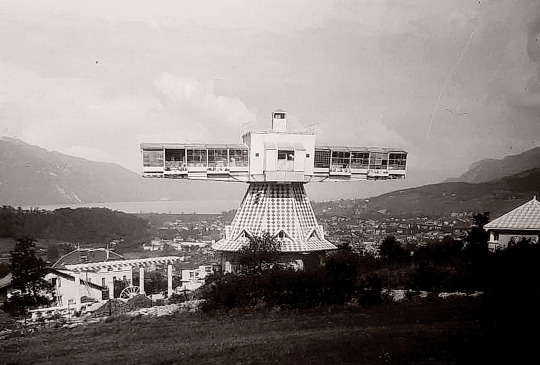





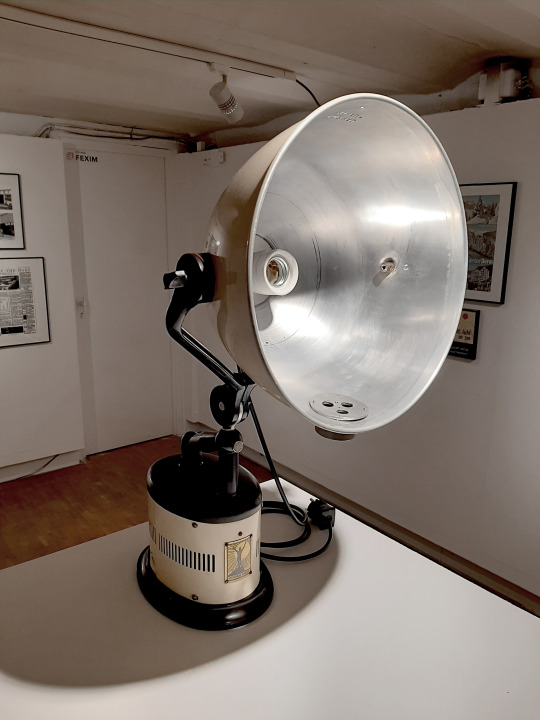
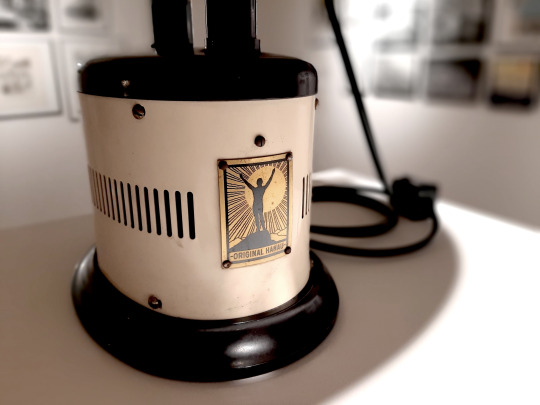
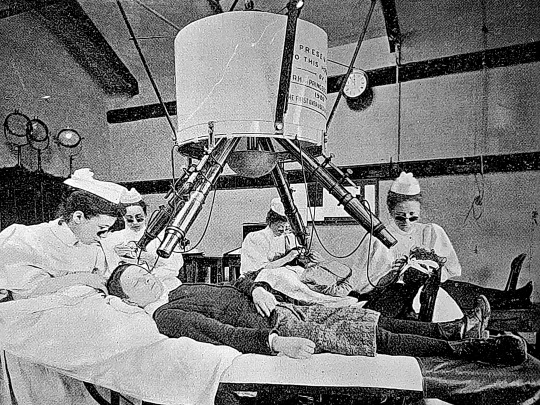
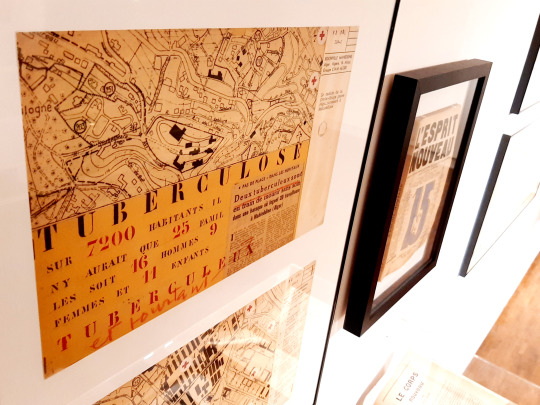
“Sick Architecture” Exhibition, CIVA, Rue de l’Ermitage 55, 1050, Brussels, Belgium _ Conceived by Beatriz Colomina [guest curator, Princeton University], Silvia Franceschini [curator CIVA], Nikolaus Hirsch [artistic director CIVA] _ Assistant curator: Minne De Meyer Engelbeen [CIVA] _ Exhibition Architecture: OFFICE Kersten Geers David Van Severen & Richard Venlet _ 06.05.2022 - 28.08.2022 _ Photos by: Spyros Kaprinis [18.06.2022].
“Architecture and sickness are tightly intertwined. Architectural discourse always weaves itself through theories of body and brain, constructing the architect as a kind of doctor and the client as patient. Architecture has been portrayed as both a form of prevention and cure for thousands of years. With Sick Architecture, CIVA and guest curator Beatriz Colomina (Princeton University) highlight a topic that has shaped our lives since the outbreak of the COVID-19 pandemic.”
https://civa.brussels/en/exhibitions-events/expo-sick-architecture
#Sick Architecture#Exhibition#CIVA#Brussels#Beatriz Colomina#Nikolaus Hirsch#Minne De Meyer Engelbeen#OFFICE Kersten Geers David Van Severen#Richard Venlet#Spyros Kaprinis#2022
4 notes
·
View notes
Text
Fundstück
Ludwig Thoma ,Jagdgeschichten
Der Menten-Seppei
Eine altbayerische Wilderergeschichte
Diese Geschichte ist wahr. Alle Leute, die zwischen Tölz und Miesbach wohnen, kennen sie, und mancher würde es mir verübeln, wenn ich etwas dazu täte oder davon wegließe. Also will ich bei der Wahrheit bleiben.
In der Schießstätte zu Tegernsee hängt neben vielen schön gemalten Ehrenscheiben eine, die besondere Aufmerksamkeit verdient. Ein grimmig blickender Jäger schaut mit dem Gewehre im Anschlage hinter einem Baume hervor. Neben ihm fletscht eine rauhborstige Dogge die Zähne. Beide machen einen unangenehmen Eindruck auf den Beschauer; man sieht ihnen an, daß sie schwer umgängliche Wesen waren. Und der Eindruck ist richtig. Denn das Bild stellt vor den königlichen Revierjäger Johann Mayr von Gmund mit seinem Fanghunde, genannt »Donau«.
Johann Mayr lebte um das Jahr 1832 zu Gmund; sein Haus wird heute noch gezeigt. Es steht unterhalb der Mangfallbrücke. Er war ein verwegener und überaus scharfer Jäger, der sein Revier mit aller Gewalt sauber hielt. Manchen schlauen Wildbretschützen hat er überlistet und ihn hinaufgeschossen, daß der Rauch wegging. Und manchem jungen Burschen hat er vorzeitig zur ewigen Seligkeit verholfen. Ohne Ave-Maria und Sterbgebet, im grünen Wald.
Sein letztes Opfer war der junge Sohn des Mentenbauern von Hausham, der Menten-Seppei. Dessen trauriges Schicksal trug sich aber folgendermaßen zu. An Martini, den 11. November 1832, schoß der Mesner Anderl, königlicher Jagdgehilfe von Schliersee, beim Eckardt-Kreitl am Ostiner Berge einen kapitalen Hirsch. Dies tat er nicht mit Rechten, denn der Platz lag im Revier des Johann Mayr. Aber, wie es so geht, er wollte den Prachtkerl nicht hinten lassen, als er so schön vor ihm stand. Da zündete er an, und – pumps – der Hirsch lag da. Hinterdrein bedachte sich der Mesner Anderl, und es fiel ihm ein, daß der Mayr in solchen Dingen einen ganz schlechten Tabak rauchte. Also ging er her und versteckte den Hirsch sorgfältig unter Dachsen und Laubstreu. Alsdann begab er sich nach Gmund zum Gastwirt Obermayer, woselbst er einige Halbe Bier trank und vom Fenster aus die gegenüberliegende Wohnung des Revierjägers beobachtete. Er wollte sich Gewißheit verschaffen, ob Mayr seinen Dienstgang nach Ostin oder nach einer anderen Richtung hin mache. Denn er dachte, daß er seine Jagdbeute nur dann in Sicherheit bringen könnte, wenn Mayr nicht um den Weg war.
Nach einiger Zeit sah er wirklich den Revierjäger. Dieser verließ ruhig und gemächlich sein Haus und schlug die Straße nach Tegernsee ein. Also war die Luft sauber, meinte der Anderl, und eilte nach Ostin zurück. Bei den Eckardthäusern traf er den Menten-Seppei, seinen alten Spezi und Schulkameraden. Er versprach ihm einen Kronentaler, wenn er ihm den Hirsch nach Schliersee fahre. Der Seppei ließ niemalen keinen Freund nicht sitzen, und darum versprach er auch dem Anderl seine Hilfe. Die zwei verabredeten, daß Seppei in der Nacht mit dem Schlitten zum Eckardt-Kreitl fahren und mit Anderl den Hirsch auflegen sollte.
Nun hatte aber der Revierjäger Mayr bereits Kenntnis davon, daß dort unter der Streu ein Vierzehnender versteckt lag. Der Jagdgehilfe Riesch hatte den Schuß gehört und ging ihm nach. Er fand den Hirsch und meldete es seinem Vorgesetzten. Mayr faßte sofort Verdacht auf einen Wilderer, und weil er mit allen Schlichen vertraut war, vermutete er ganz richtig, daß der Frevler zuerst in Gmund herumspionieren werde. Für diesen Fall wollte er den Lumpen sicher machen und tat so, als ginge er ahnungslos nach Tegernsee. In Quirin aber bog er vom Wege ab und stieg von der Neureuth zum Eckardt-Kreitl hinunter.
Dort paßte er nun mit Riesch in der mondhellen Nacht auf den vermeintlichen Wilddieb. Er hatte seinen Hund Donau bei sich, eine bissige Dogge, die auf den Mann dressiert war und ihm schon oft guten Beistand geleistet hatte.
Der Seppei fuhr zur verabredeten Zeit an die Wolfsmühle, wo ihn Anderl erwartete. Als die beiden am Eckardt-Kreitl anlangten, sah Anderl am Waldrande etwas Verdächtiges und sprang heimlich vom Schlitten herunter. Gleich darauf wurde Seppei angerufen. Noch vor er antworten konnte, riß ihn der Hund des Revierjägers vom Schlitten herunter und versetzte ihm mehrere Bisse.
Erst nach einiger Zeit pfiff Mayr seinen Hund zurück und stellte den Burschen zur Rede.
Seppei wollte den Freund nicht verraten und verlegte sich aufs Lügen. Das bekam ihm schlecht, denn der wütende Jäger hieb ihm mehrere Male mit dem Bergstocke über den Buckel und zwang ihn dann, den Hirsch aufzulegen. In Gmund wurde Seppei in das Försterhaus geführt und an das Stiegengeländer gebunden. Mayr schlug ihn hier mit der Hundepeitsche, daß das Blut an ihm herunterlief. Die ganze Nacht blieb Seppei angebunden bis um vier Uhr morgens. Da wurde er wieder auf den Schlitten geschnallt, um nach Miesbach gebracht zu werden.
Während der Fahrt scheute das Pferd. Mayr konnte es nicht mehr lenken und befreite Seppei von seinen Fesseln, damit er das Tier beruhigen sollte. Anfänglich ging es gut, aber plötzlich setzte der Gaul quer über die Straße. Seppei konnte ihn nicht halten; seine Gelenke waren geschwächt, und er fiel halb ohnmächtig vom Schlitten hinunter.
Da glaubte Mayr, daß der Gefangene fliehen wollte, und in Wut darüber schoß er ihm eine Ladung gehacktes Blei in den Rücken. Er ließ den Sterbenden im Schnee liegen und fuhr nach Miesbach, wo er bei Gericht seine Tat als berechtigt zu schildern wußte.
Seppei wurde aufgefunden und zum Landarzte Scheucher verbracht, in dessen Hause er wenige Stunden später unter qualvollen Schmerzen starb.
Der wilde Revierjäger wurde für seine Grausamkeit schwer bestraft. Nicht vom Gerichte. Das ließ ihn ungeschoren, denn, wie gesagt, damals machte man nicht viel Umstände wegen eines wildernden Bauernburschen. Der gestrenge Herr Landrichter hielt zu den Jägern, die das wertvolle Revier des Königs hüteten.
Aber die jungen Burschen im Tegernseer Land waren damals so wenig wie heute der Meinung, daß man eine solche Tat ruhig hinnehmen muß. Sie wollten den toten Kameraden rächen. Und sie besorgten das gründlich.
Ein Jahr nach dem Vorfall, wiederum am Martinitage, erhielt Mayr die Nachricht, daß am Giglbergfelde gewildert werden sollte. Der Schlaue ließ sich überlisten.
Mit zwei Jagdgehilfen, dem Nikolaus Riesch und Johannes Probst, begab er sich dorthin und legte sich auf die Lauer. Nach kurzer Zeit erblickten die Jäger unter einer Buche am Giglbergfelde einen Mann mit geschwärztem Gesichte. Es war der Waldhofer Hansl, ein alter Freund des Menten-Seppei, der die Aufgabe übernommen hatte, den Mayr anzulocken. Die Jäger stürzten sich auf ihn, und die Dogge des Revierjägers richtete den Burschen schon übel zu, als plötzlich sechs seiner Kameraden die Jäger umringten und mit den Gewehrkolben auf sie einschlugen. Mayr fiel schwerverwundet zu Boden, ebenso Riesch, der Jäger Probst stellte sich tot und rettete auf diese Weise sein Leben. Riesch starb den nächsten Tag, Mayr erst im März des darauffolgenden Jahres. Er kam nicht mehr zum Bewußtsein und konnte die Täter nicht namhaft machen. Der Jäger Probst aber bezeichnete den Waldhofer Hansl als einen der Mörder und da man auf seiner Brust die vernarbten Hundebisse fand, welche er im Kampfe davongetragen hatte, wurde er verurteilt, – zu sechzehn Jahren Kerker. Er verriet keinen, und so mußten die andern Burschen nach mehrjähriger Untersuchungshaft freigelassen werden. Im Friedhofe zu Gmund liegen die erschlagenen Jäger.
Auf einem alten Steine las ich die Inschrift: »Hier ruhet der ehrengeachtete Johann Mayr, königlicher Revierjäger in Gmund. Er starb an den Folgen der Wunden, die er im Kampfe mit ruchlosen Wilderern erhalten, am 16. März 1834.« Und auf einer Tafel neben der Sakristei steht: »Hier ruhet Nikolaus Riesch, Jagdgehilfe in Gmund. Er fiel in treuer Pflichterfüllung an der Seite seines Herrn, unter den Streichen der Wilddiebe, am 12. November 1833.«
So hat sich die Geschichte zugetragen. Die sittliche Weltordnung ist aber dabei wieder einmal nicht auf ihre Rechnung gekommen. Denn der Hauptschuldige, der Mesner Anderl von Schliersee, der sich am schlechtesten benommen hatte, fand nicht den Lohn seiner bösen Tat. Wenigstens nicht auf dieser Welt. Und wahrscheinlich auch nicht in der andern. Denn er hat sich von der wüsten Jägerei abgewendet und einen gar frommen Beruf ergriffen, der ihm Gelegenheit bot, durch einträgliche Frömmigkeit seine Sünden abzuwaschen. Er wurde wohlbestallter Pfarrmesner zu Irschenberg. Seine feige Tat soll er freilich bereut haben. Wenigstens sagte das Lied, das Max Herndl von Kammerloh über diese traurige Geschichte verfertigte:
»Es war der Jäger von Schliers schon selber voll Verdruß, Daß er des Seppls Unglück war, weil er den Hirschen schuß.«
Trotzdem aber wurde er dick und behäbig wie alle Kollegen in diesem heiligmäßigen Berufe, und starb erst dreißig Jahre später in seinem Bette.
0 notes
Link
Ho Ho Ho Druck, Nikolaus, Hirsch, Weihnachten, druckbar, Kunst, Typografie, Vintage, Poster, Kunstruck, Inspiration, Home Dekor, Geschenk - https://zitate.hilesi.org/?p=4424
0 notes
Text
Art Without Death: Russian Cosmism
Haus der Kulturen der Welt (HKW)
(www.hkw.de)
Exhibition: September 1 — October 3, 2017
Conference: September 1— 2, 2017
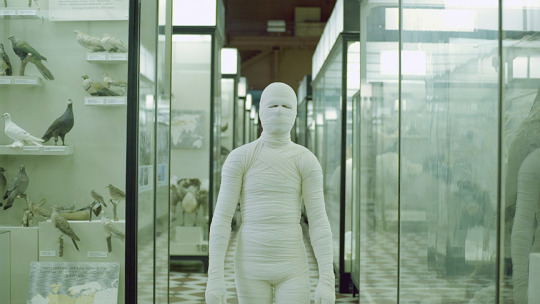
Anton Vidokle, film still from Immortality and Resurrection for All, 2017. Courtesy the artist.
“Russian Cosmism was a movement that called for material immortality and resurrection, as well as travel to outer space. It developed out of the spirituality of nineteenth-century Russia and a strong fascination with science and technology. The doctrine of immortal life in infinite space captured the optimism of both science and the arts at the time. Since then, the utopian, science fiction-like thinking of the cosmists had a great influence on art, science, and politics in both pre-revolutionary and Soviet Russia.
Looking at it today, Russian Cosmism, although suppressed by official Soviet ideology, opens up new perspectives on the Russian avant-garde as well as the ideology and politics of Russia to the present day. For example, in his influential writings, Nikolai Fedorov (1829‒1903) demanded that the ultimate goal of technology must be to overcome death; all people who had ever lived on Earth must be brought back to life. The cosmists were also visionary pioneers of space travel. For Fedorov, for instance, the colonization of other planets would be the inevitable consequence of the lack of space after the resurrection of the dead. The institution of the museum also played a central role in Russian Cosmism, as the remains needed for the resurrection of individuals would have to be preserved there. Fedorov, like the painter and founder of Suprematism Kazimir Malevich, believed that after the death of God, the museum would be the only place where a transhistorical union beyond the grave was possible.
Art Without Death delves into Russian Cosmism—its philosophical, scientific, artistic concepts and ideas—by intertwining historical material and contemporary contributions. An exhibition shows the film trilogy Cosmism (2013–17) by Anton Vidokle in an architectural structure inspired by Muslim cemeteries in Kazakhstan—where many of the films were shot—and Lenin’s mausoleum on Red Square. The exhibition design by Nikolaus Hirsch and Michel Müller is based on an idea by Hito Steyerl. The third part of the trilogy, an extensive research project shot all over the former Soviet Union, will premiere at Art Without Death. The exhibition also features historic works by the Russian avant-garde from the George Costakis collection (State Museum of Contemporary Art Thessaloniki), the largest collection of Russian avant-garde outside Russia. These works —selected by philosopher and art critic Boris Groys—are inspired by the projects of the Utopian biopolitics of immortality, enabling re-readings against their Cosmist backdrop that have often been overlooked. And Arseny Zhilyaev’s volumetric artwork—a functional library as well as an installation—compiles a wide range of key works on Russian Cosmist thought, science, poetry, and fiction under the light of blood-circulation-improving therapeutic lamps based on a technology by biophysicist Alexander Chizhevsky.
A conference on September 1 to 2 will explore the current relevance of Cosmism: on the threshold between anthropocentrism and materialism, this movement appears relevant again 100 years after the Russian Revolution. With contributions by Anastasia Gacheva, Hito Steyerl, Trevor Paglen, Kodwo Eshun, Keti Chukhrov, Michael Hagemeister and others.
In September 2017, Sternberg Press will issue a publication including conversations on Cosmism with among others: Arseny Zhilyaev, Hito Steyerl, Franco (Bifo) Berardi, Boris Groys, Marina Simakova, Anton Vidokle.”
Organized by Anselm Franke.
Part of 100 Years of Now
#russian cosmism#Art Without Death#Arseny Zhilyaev#Hito Steyerl#Franco (Bifo) Berardi#Boris Groys#Marina Simakova#Anton Vidokle#Haus der Kulturen der Welt#Trevor Paglen#Anastasia Gacheva#Kodwo Eshun#Keti Chukhrov#Michael Hagemeister#Nikolai Fedorov#soviet union#soviet russia
3 notes
·
View notes